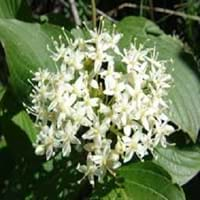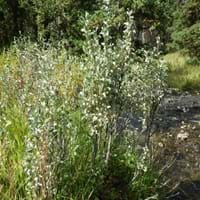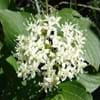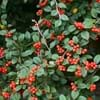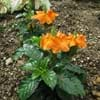Life Span
Perennial
Perennial
Origin
United States, Northeastern United States, Mid-Atlantic United States, Southeastern United States
North America, Alaska, Canada
Types
not available
Not Available
Habitat
Banks, Lake Sides, Shores of rivers or lakes
Dappled Shade, Hedge, Sunny Edge, Woodland Garden
USDA Hardiness Zone
5-8
2-6
Sunset Zone
3b, 4, 5, 6, 7, 8, 9
Not Available
Habit
Oval or Rounded
Thicket/Colonizing
Flower Color
Ivory
Yellow
Flower Color Modifier
Not Available
Not Available
Fruit Color
White
Green, Tan
Leaf Color in Spring
Green, Dark Green
Not Available
Leaf Color in Summer
Dark Green
Not Available
Leaf Color in Fall
Dark Green, Brown, Dark Red
Not Available
Leaf Color in Winter
Not Available
Not Available
Leaf Shape
Acuminate
Lanceolate
Plant Season
Summer, Fall
Spring, Summer, Fall
Sunlight
Full Sun, Partial Sun, Partial shade
Full Sun, Partial Sun
Type of Soil
Clay, Loam, Sand
Loam, Sand
The pH of Soil
Acidic, Neutral, Alkaline
Neutral, Alkaline
Soil Drainage
Average
Well drained
Bloom Time
Early Summer
Not Available
Tolerances
Wet Site
Not Available
Where to Plant?
Ground, Pot
Ground, Pot
How to Plant?
Cuttings, Divison, Stem Cutting
Hardwood Cuttings, Seedlings
Plant Maintenance
Medium
Medium
Watering Requirements
Average Water Needs
Average Water Needs, Do Not over Water
In Summer
Lots of watering
Lots of watering
In Spring
Moderate
Moderate
In Winter
Average Water
Average Water
Soil pH
Acidic, Neutral, Alkaline
Neutral, Alkaline
Soil Type
Clay, Loam, Sand
Loam, Sand
Soil Drainage Capacity
Average
Well drained
Sun Exposure
Full Sun, Partial Sun, Partial shade
Full Sun, Partial Sun
Pruning
Remove damaged leaves, Remove dead branches, Remove dead leaves
Remove damaged leaves, Remove dead branches, Remove dead leaves
Fertilizers
All-Purpose Liquid Fertilizer
Phosphorous, Use nitrogen rich soil
Pests and Diseases
Red blotch
Leaf spot, Rust
Plant Tolerance
Drought
Drought
Flowers
Showy
Insignificant
Flower Petal Number
Single
Not Available
Foliage Texture
Medium
Not Available
Foliage Sheen
Matte
Not Available
Attracts
Birds
Scale Insects
Allergy
Unknown
Not Available
Aesthetic Uses
Ground Cover, Wild gardens, Woodland margins
Bonsai
Beauty Benefits
Not Available
Not Available
Environmental Uses
Air purification
Fixes Nitrogen
Medicinal Uses
Not Available
Cancer, Salve, VD
Part of Plant Used
Not Available
Fruits, Seeds
Other Uses
Acts as a natural source of rain water for birds and insects.
Jelly, Used for making soaps, Used to flavour soups
Used As Indoor Plant
No
Yes
Used As Outdoor Plant
Yes
Yes
Garden Design
Foundation, Hedges, Mixed Border, Screening, Wind Break
Hedges, Mixed Border, Screening, Wind Break
Botanical Name
CORNUS amomum
ELAEAGNUS commutata
Common Name
red willow
Silverberry, Wolf-Willow
In Hindi
silky dogwood
Silverberry
In German
silky dogwood
Silverberry
In French
silky dogwood
Silverberry
In Spanish
silky dogwood
Silverberry
In Greek
silky dogwood
Silverberry
In Portuguese
silky dogwood
Silverberry
In Polish
silky dogwood
Silverberry
In Latin
silky dogwood
Silverberry
Phylum
Magnoliophyta
Magnoliophyta
Class
Magnoliopsida
Magnoliopsida
Family
Cornaceae
Elaeagnaceae
Clade
Angiosperms, Asterids, Eudicots
Angiosperms, Eudicots, Rosids
Tribe
Not Available
Not Available
Subfamily
Not Available
Elaeagnoideae
Number of Species
Not Available
Difference Between Silky Dogwood and Silverberry
If you are confused whether Silky Dogwood or Silverberry are same, here are some features about those plants to help you choose better. Many people think that these two plants have the same characteristics, but one can see Silky Dogwood and Silverberry Information and learn more about it. Fertilizers required for proper growth of Silky Dogwood are All-Purpose Liquid Fertilizer, whereas for Silverberry fertilizers required are Phosphorous and Use nitrogen rich soil. Hence, one should know the basic difference between Silky Dogwood and Silverberry if you are planning to have them in your garden to enhance its beauty.
<
Flowering PlantsImportance of Silky Dogwood and Silverberry
Want to have the most appropriate plant for your garden? You might want to know the importance of Silky Dogwood and Silverberry. Basically, these two plants vary in many aspects. Compare Silky Dogwood and Silverberry as they differ in many characteristics such as their life, care, benefits, facts, etc. Every gardener must at least have the slightest clue about the plants he wants to plant in his garden. Compare their benefits, which differ in many ways like facts and uses. The medicinal use of Silky Dogwood is Not Available whereas of Silverberry is Cancer, Salve and VD. Silky Dogwood has beauty benefits as follows: Not Available while Silverberry has beauty benefits as follows: Not Available.
Compare Facts of Silky Dogwood vs Silverberry
How to choose the best garden plant for your garden depending upon its facts? Here garden plant comparison will help you to solve this query. Compare the facts of Silky Dogwood vs Silverberry and know which one to choose. As garden plants have benefits and other uses, allergy is also a major drawback of plants for some people. Allergic reactions of Silky Dogwood are Unknown whereas of Silverberry have Not Available respectively. Having a fruit bearing plant in your garden can be a plus point of your garden. Silky Dogwood has showy fruits and Silverberry has showy fruits. Also Silky Dogwood is not flowering and Silverberry is not flowering . You can compare Silky Dogwood and Silverberry facts and facts of other plants too.
